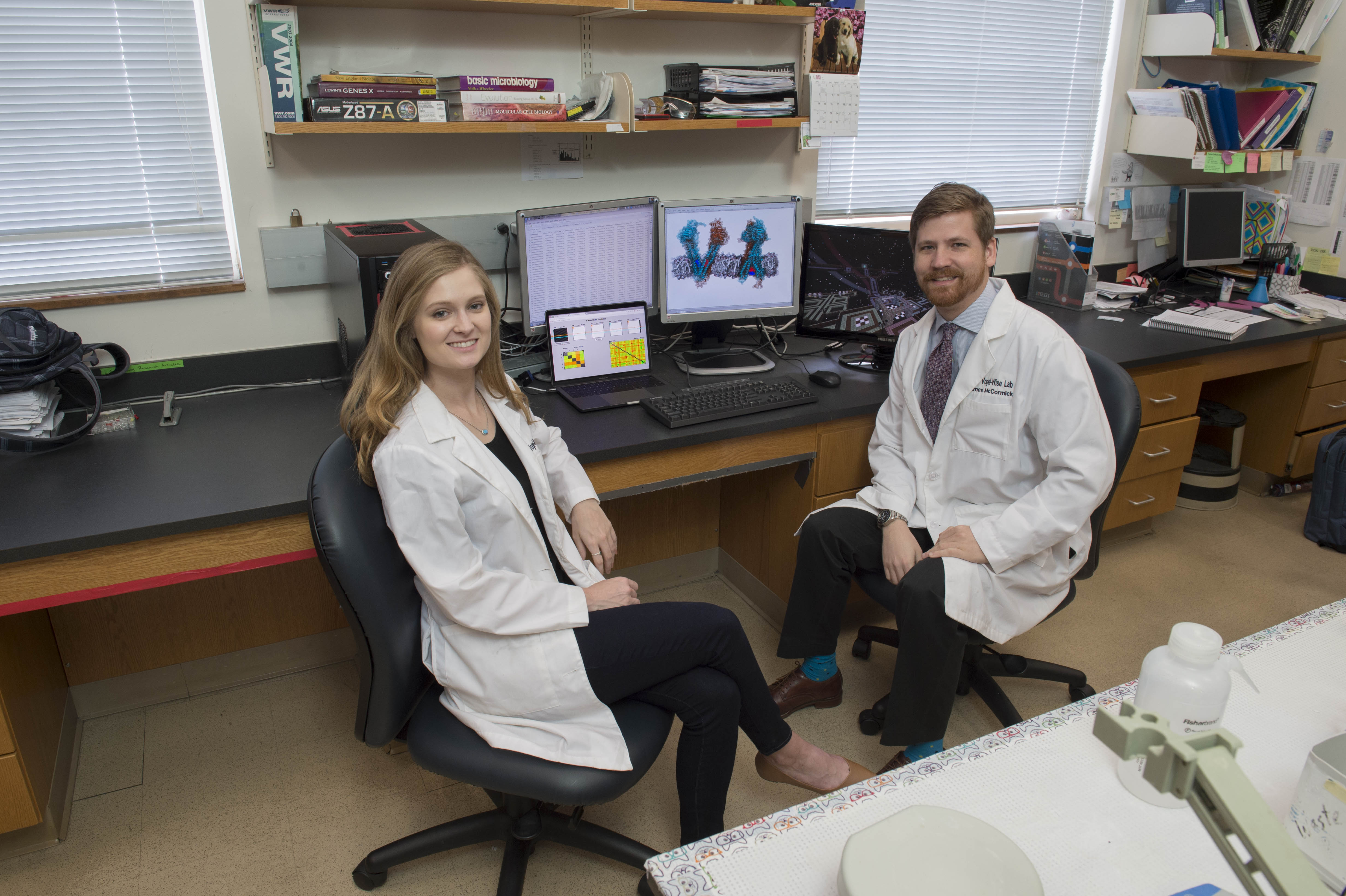From answering pre-launch questions before a NASA mission to one of Saturn’s moons, to identifying hundreds of mostly “hidden” landslides on the U.S. West Coast, SMU professors and students fueled research with impact in 2021. Here are some of the Dedman College highlights. You can find the full list of SMU research accomplishments here.
The New York Times, Wired, Space, ScienceDaily, Live Science and Discover Magazine all featured the work of chemistry expert Tomče Runčevski, who led a team of researchers to create Titan-in-a-test-tube, which replicated the conditions of Saturn’s moon, Titan. Titan is the only moon in our solar system to have a dense atmosphere like Earth and is the only one to have liquid rivers, lakes and seas.
The duck-billed dinosaur, Yamatosaurus, discovered by paleontologist Tony Fiorillo and colleagues in Japan, was named by National Geographic as one of the 10 most amazing dinosaurs discovered in 2021. The new dinosaur species was also featured in Newsweek, The Hill and Salon, among others. In addition, a journalist writing for The Washington Post tagged along with Fiorillo on his search for Arctic dinosaur footprints in one of Alaska’s most remote locations.
In the “good news, bad news” category, the meteorite that crashed into Earth 66 million years ago caused the extinction of non-avian dinosaurs, but also led to the emergence of the Amazon rainforest, paleobotanist Bonnie Jacobs said in The Washington Post and Scientific American and on The Weather Channel.
Psychology expert Nathan Hudson’s recent research that personality traits can be changed through intervention was highlighted in Psychology Today and Forbes.
In Iceland, SMU volcanologist John Eichelberger and an international team are learning more about a magma chamber below the Krafka volcano, Science reported.
KERA and Oncology News covered biology expert Robert Harrod’s research on TIGAR, a protein found in cervical cancer cells. He found that when the protein was decreased, cervical cancer cells became hypersensitive to chemotherapy treatments.
Their grandmothers’ struggles with Alzheimer’s disease inspired two SMU Ph.D. students, James McCormick and Lauren Ammerman, to identify a protein that may slow the onset of the disease. The Dallas Morning News and NBC 5 featured their research.
Geophysicist Zhong Lu and Yuankun Xu, a postdoctoral researcher who works in Lu’s SMU Radar Laboratory, used satellite imagery to identify more than 600 slow-moving landslides near the U.S. West Coast. Less than 5% of the landslides were previously identified. The news was covered by Phys.org and AGU’s The Landslide Blog, and Lu and Xu co-authored an op-ed for syndicated news service Inside Sources calling for policymakers in western states to monitor the movement of landslides they identified.
The discovery of carbon dioxide cold traps on the Moon has implications for future lunar landings as well as possible human or robot occupation on the Moon, according to new research by planetary scientist Matthew Siegler and others in Medium.com.
Is your pet part of your family? Yes, says sociologist Andrea Laurent-Simpson in her new book, Just Like Family: How Companion Animals Joined the Household. Dallas Innovates wrote about her new book and FOX News Digital and The Bark magazine featured her op-eds.
Physics expert Stephen Sekula explored how gaps in scientific knowledge spark scientific revolutions in a full-page op-ed in The Dallas Morning News.
Biology researcher John Wise was featured in Dallas Innovates, NewsRadio 1080 and Drug Discovery Online as lead inventor of ChemGen, a computational approach to drug discovery that cuts the time and costs of drug discovery.
Psychology professor Priscilla Lui discussed her research on racial discrimination in a two-part series on anti-Asian racism with KERA radio. She also notes there is nothing micro about racial microaggressions in an op-ed piece she wrote in Diverse Issues in Higher Education.
In the Austin American-Statesman, geothermal experts Maria Richards and Bob Gregory propose that expanded use of geothermal energy may help with Texas’ recent energy woes.
The Dallas Morning News marked the one-year anniversary of Dallas County’s first COVID-19 case with a story including insight from anthropologist Neely Myers and historian Bianca Lopez.
Austin Baldwin, a psychology expert who studies vaccine acceptance, predicted in National Geographic that Johnson & Johnson’s single dose vaccine would increase vaccination rates. He also talked with People Newspapers about COVID-19 vaccines.
Physicist Krista Lynne Smith combined readings from two high-powered space telescopes to detect a bright, long-lasting gamma-ray burst. Sci-News, UPI and Astronomy covered the discovery. The physics professor also explained the science of the Dec. 21 alignment of Jupiter and Saturn to CBS 11. Missed it? You’ll have another opportunity in 2080.
DFW Child Magazine, The Autism Site News and Pediatrics Daily News covered new research from psychology expert Chrystyna Kouros suggesting children on the autism spectrum may be more likely to misinterpret healthy arguments between their parents as negative, compared to children who are not on the autism spectrum.
Ice age Siberians may have been the first to domesticate dogs, according to a paper co-authored by renowned SMU anthropologist David Meltzer and covered by The New York Times and Science.
Dallas Innovates highlighted the work of SMU engineering professors Ali Beskok and J.-C. Chiao that has developed a new rapid COVID-19 antibody test that produces results in minutes from a drop of blood.
Psychology expert George Holden discussed his child development model with Business News Daily. Holden found that effective parents guide their children by ensuring they are developing along positive trajectories.
Humans did not hunt woolly mammoths to extinction, anthropologist David Meltzer told NPR. The creatures, he said, were wiped out 15,000 years ago by massive climate change that eliminated dozens of ice age creatures. In Nature, he supported new evidence of the earliest human occupation of North America – 20,000-year-old fossilized human footprints found in White Sands, New Mexico

